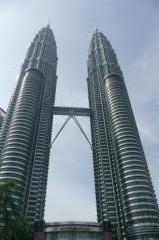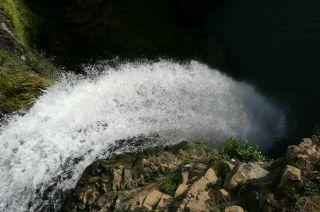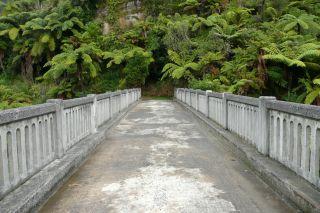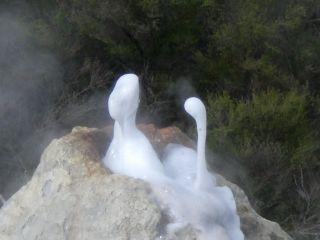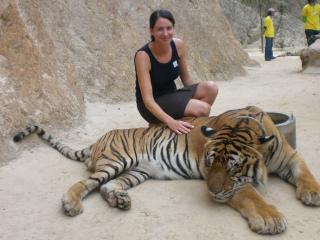
After only one hot sticky day of trying to avoid being scammed in Bangkok we were ready to leave. We had booked ourselves on a day trip to Kanchanaburi today, home of the bridge over the river Kwai. Since we have not seen the film (we’re too young… 😉 ) we thought we’d better do a little homework by reading the guidebook. We learned that the famous bridge over the river Kwai is part of a railway built by PoWs under the Japanese during World War II (but you probably knew that already). Our first stop was at the PoW cemetery, with almost 7,000 graves (mainly British, Australians and Dutch) laid out in very neat rows it was quite a moving experience. And it certainly set the scene for our next stop; the World War II museum which gave us a little more insight into the Japanese atrocities at the time (one more heartening tale told of how the PoWs, when building the original wooden bridge, selected the worst timber they could find so that the bridge rotted after a few months).
The museum also gave us our first view of the bridge itself. Which meant there was only thing left to do; walk across it, no easy task when so many other people are trying to do the same thing.
A brief visit to possibly the most boring waterfall ever and we were ready for the highlight of our day out; the Tiger Temple, a monastery turned tiger sanctuary. Our first tiger encounters were with the huge adults at tiger canyon. Even though they were sleeping heavily it was still a little disconcerting to be sat so close to and to be touching real live tigers. The tiger cubs weren’t so scary, they were just unbelievably cute. They were only two months old and still had blue eyes, I was seriously tempted to slip one into my bag to take home. The teenage tiger looked the most unpredictable and possibly the most likely to turn round and have a swipe at you, neither Si nor I were in a hurry to have our photo taken with him, after all we already had photos with us in front of the huge adults anyway.
